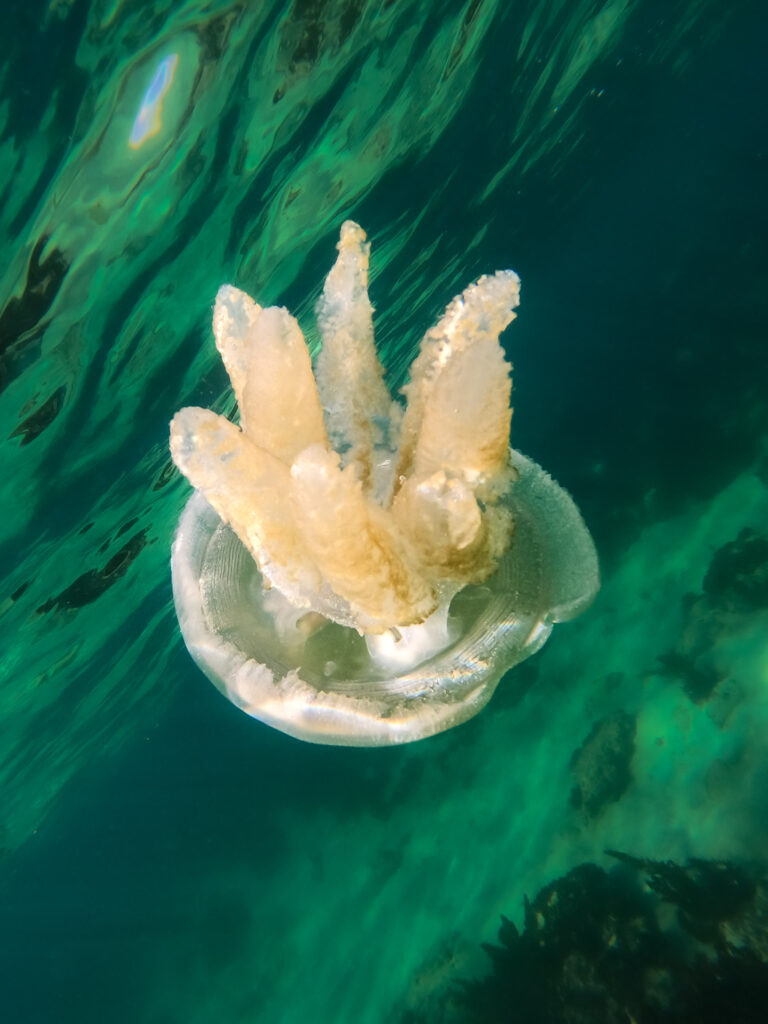Jelly Blubber jellyfish, a captivating species, are commonly found in the coastal regions of Australia. This article explores their distribution, habitat, physical adaptations, feeding behavior, interactions with other species, human impact, and conservation efforts surrounding these intriguing marine creatures.
Distribution and Habitat
The Jelly Blubber jellyfish thrives in the coastal waters that stretch along Australia’s extensive coastline. From the temperate south to the tropical north, these gelatinous organisms can be found in estuaries, harbors, and various coastal areas. Their adaptability allows them to survive in diverse marine habitats.
Physical Adaptations
The Jelly Blubber jellyfish boasts a distinct bell-shaped body, often translucent in appearance, with trailing tentacles adorned with specialized cells called nematocysts. These nematocysts are equipped with venomous substances used for defense and capturing prey. This bell-shaped structure, along with its delicate oral arms, enables the jellyfish to navigate ocean currents and efficiently hunt for food.
Want to identify that fish? Gerald R. Allen’s field guide has the largest species coverage of them all, and is very well illustrated.
Feeding Behavior
As opportunistic feeders, Jelly Blubbers primarily consume small fish, zooplankton, and other invertebrates. Using their trailing tentacles, they employ nematocysts to immobilize and capture prey. The captured food is then transported to the central mouth by their delicate oral arms. This feeding behavior sustains their nutritional needs and contributes to their role in the marine ecosystem.
Interactions with Other Species
The Jelly Blubber jellyfish plays a crucial role in the intricate web of marine life in Australia. They serve as both predator and prey, impacting the balance of the coastal ecosystem. Larger marine species, such as sea turtles and certain fish, feed on Jelly Blubbers, while juvenile fish find refuge among their bells until they grow larger. These interactions highlight the complex interdependence of marine organisms.
Human Impact and Concerns
While Jelly Blubbers occasionally impact human activities, negative encounters are relatively rare. In large numbers, they can disrupt fishing operations and have implications for the aquaculture industry. However, the majority of interactions with humans are harmless. Contact with their trailing tentacles may cause discomfort, but severe stings are infrequent. Public awareness and education play a vital role in minimizing negative interactions.
Conservation and Management
To ensure the preservation of Jelly Blubber jellyfish and their habitat, ongoing research and monitoring efforts are essential. Scientists study population dynamics, the impact of climate change, and the overall health of the marine environment. Conservation initiatives focus on promoting responsible coastal tourism, providing guidelines for beachgoers, and raising awareness about the ecological importance of these creatures.
In conclusion, the Jelly Blubber jellyfish is a captivating species found in Australia’s coastal waters. Their distribution, physical adaptations, feeding behavior, interactions with other species, and potential human impact make them subjects of scientific study and conservation efforts. By understanding and appreciating the significance of these remarkable creatures, we can contribute to their preservation and foster a harmonious coexistence with the mesmerizing Jelly Blubber jellyfish.

Distribution
Temperate waters of southeast Australia.
Facts
Max Size: 35 cm
Depth: 0-30m
Lifespan: Up to 9 months
Risk and Safety
No significant risk, causes mild irritation to the skin.
Conservation
IUCN Status: Not Evaluated

